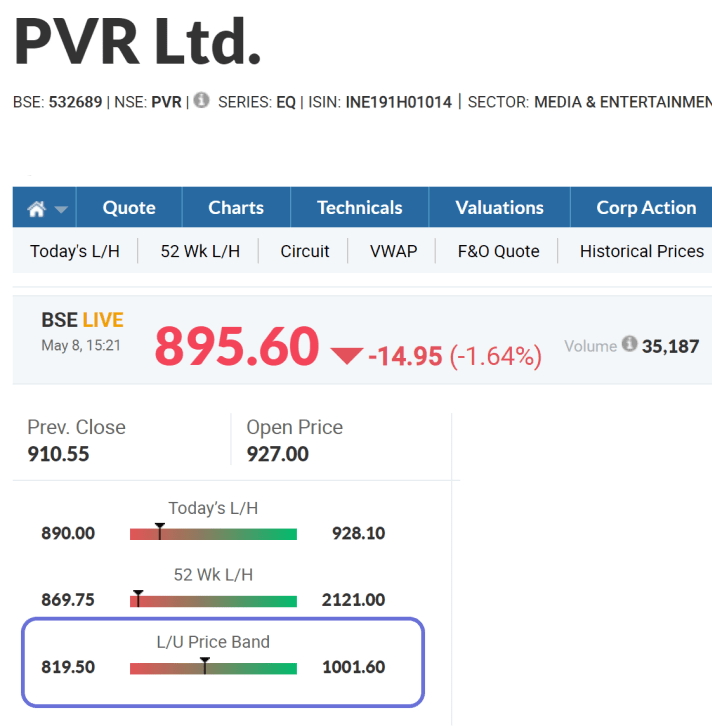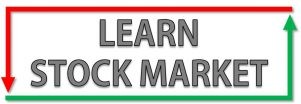The full form of L/U Price Band is Lower / Upper Price Band – which in other words means Lower Circuit and Upper Circuit.
The circuits are placed so that the price cannot cross the upper circuit on the upside and lower circuit on the downside.
Let’s take an example:

The screenshot above is from the Moneycontrol website. The stock in our example is PVR Cinemas.
The current price of the stock on May 8 is 895.6 per share.
The previous closing price is 910.55. This is the important number – as the lower circuit and upper circuit price band is decided based on the previous day closing price.
Each stock has a different price band limit – which is usually 5%, 10%, 15% and 20%.
L/U Price Band Calculation
The L/U Price Band for PVR is 10%.
10% of the previous closing price 910.55 is 91.05.
So, the upper circuit price will be 910.55 + 91.05 = 1001.60.
Check out the image above, in the L U Price Band, the U or Upper Circuit is mentioned as 1001.60.
Similarly, the lower circuit price will be 910.55 – 91.05 = 819.50.
Again, that number is mentioned in the above image too.
The Price of PVR Cinemas on this day, cannot go below 819.50 or above 1001.60.
Who decides the Price Band?
The stock exchanges release L/U Price Bands for stocks everyday. Depending on the volatility, stocks are put into various categories of 5%, 10%, 20% etc.
Small and Micro cap stocks, where prices can be more easily manipulated by operators or big traders are usually placed in the 5% bracket.
Large Cap stocks that are traded in the ‘Future and Option’ segment, do not have upper or lower circuit. The prices of these stocks can rise or fall by any amount.
For example, the price of Infibeam fell by 73% in a single day. Whereas, Jet Airways rose by 122% in a single day in 2019.
What is Daily Price Range?
Daily Price Range is between the Upper and Lower Price Band.
If the previous closing price is 100 and the circuit limit is 10% – the Price Range for the day will be 90 to 110.
When the price reaches 90 – it’s called lower circuit. At this price, there are only sellers and no buyers for the stock.
If the price reaches 110 – it’s called upper circuit. At this price point, there are only buyers and no sellers.
If the stock closes at upper circuit of 110. The next day, the stock exchanges will decide if the stock will be placed again in 10% or if it will be changed to 5%, 20%.
If they decide to stick to 10%, then the price range for the day would be 99 and 121 i.e 10% above and below 110.


Was searching everywhere for this.. Finally found it here. Very clearly explained.
In Moneycontrol they give L U Price band but they don’t mention what it is.
It was very confusing.
Are there no higher circuits than 20% ?
Is there something like 50% or 100% ? Because I remember once a company called DHFL fell by 50 or 60% in one day.
Why wasn’t LU Price Band applicable to that company?
If you can answer, please do. Thanks.
Hi Kumar,
Large Cap stocks that are traded in the ‘Future and Option’ segment, do not have upper or lower circuit. The prices of these stocks can rise or fall by any amount.
Hi Kumar,
Large Cap stocks that are traded in the ‘Future and Option’ segment, do not have upper or lower circuit. The prices of these stocks can rise or fall by any amount.
Two wheeler finance